Launched: Jan. 19, 2006
Jupiter Flyby: Feb., 2007
Pluto Flyby: July 14, 2015
Ultima Thule Flyby: Jan. 1, 2019
Where is it now? Last information from theskylive.com is that New Horizons is currently out 7,507,890,398 kilometers, equivalent to 50.187147 astronomical units. Light takes 6 hours, 57 minutes and 23.6267 seconds to travel from New Horizons and arrive to us. (Information found 3/5/21)
Pluto and its moons
Pluto is smaller than Earthís Moon and has a heart-shaped glacier thatís the size of Texas and Oklahoma. Pluto has blue skies, five moons, mountains as high as the Rockies, and its snow is red.
Pluto's moons are Charon, Styx, Nix, Kerberos, and Hydra. Charon, the largest of the five moons and half the size of Pluto is tidally locked with Pluto.
Discovered in 1930, Pluto was long considered our solar system's ninth planet. But after the discovery of similar intriguing worlds deeper in the distant Kuiper Belt, icy Pluto was reclassified as a dwarf planet.
The size of Pluto has long been uncertain. Fifty years ago, the planet was thought to be 3,600 miles in diameter. But New Horizons settled the size question. Pluto is about 1,470 miles (2,370 kilometers) in diameter. Its moon Charon was confirmed to be about 750 miles (1,208 kilometers) in diameter.
New Horizons flew about 4,800 miles (7,800 kilometers) above the surface of Pluto.
Pluto displays evidence of vast changes in atmospheric pressure and possibly had running or standing liquid volatiles on its surface in the past. There are hints that Pluto could have an internal water-ice ocean today.
Stunning photographs showed a vast heart-shaped nitrogen glacier (named Sputnik Planitia for Sputnik 1, Earthís first artificial satellite) on the surface. Itís about 600-miles wide (1,000 kilometers), undoubtedly the largest known glacier in the solar system.
On Charon, images showed an enormous equatorial extension tectonic belt, suggesting a long-past water-ice ocean.
Ultima Thule
After successfully flying by Pluto and its system of moons in 2015, the New Horizons probe had a second encounter when it flew by Ultima Thule Jan. 1, 2019. Ultima Thule is a world in the Kuiper belt 6.5 billion kilometers from the Sun. (Ultima Thule's catalog designation is 2014 MU69). The name Ultima Thule fittingly means "beyond the known world". New Horizons came within about 3500 kilometers (2,220 miles) of Ultima Thule.
The tiny world itself is about 30 kilometers in size and approximately one billion miles past Pluto. An observing campaign with Earth-based telescopes determined the shape of the object to be a contact binary or a close binary sytem. New Horizons imaged its unexplored surface in the dim light of the distant Sun.
New Horizons encountered the Kuiper Belt object Jan. 1. Some 6.5 billion kilometers from the Sun, Ultima Thule is the most distant world ever explored by a spacecraft from Earth. This historic image, the highest resolution image released so far, was made at a range of about 28,000 kilometers only 30 minutes before the New Horizons closest approach. The probe sped toward the Kuiper belt world at 51,000 kilometers per hour.
Ultima Thule was revealed as a contact binary, two connected sphere-like shapes held in contact by mutual gravity. Dubbed separately by the science team Ultima and Thule, the larger lobe Ultima is about 19 kilometers in diameter. Smaller Thule is 14 kilometers across. It is theorized that the planetoid is the result of a gentle collision shortly after the birth of the Solar System.
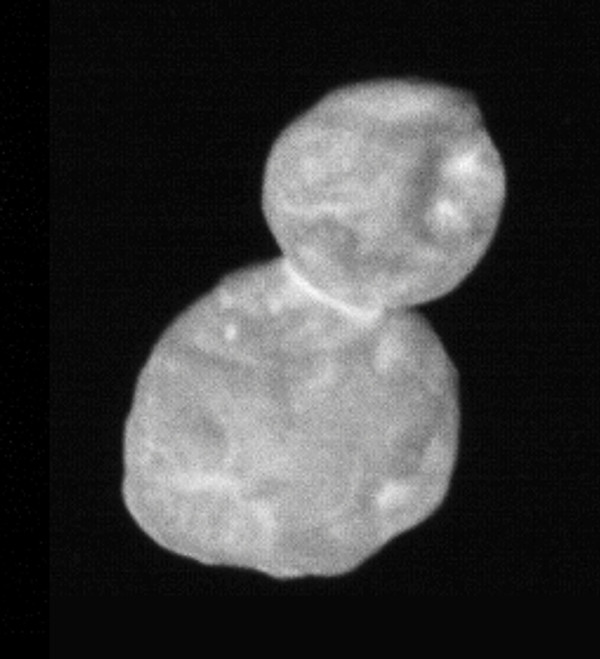 Ultima Thule as New Horizons approached |
See more at www.nasa.gov/mission_pages/newhorizons/main/index.html

Pluto from New Horizons. Credits: NASA
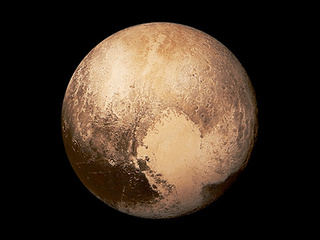
Pluto in color
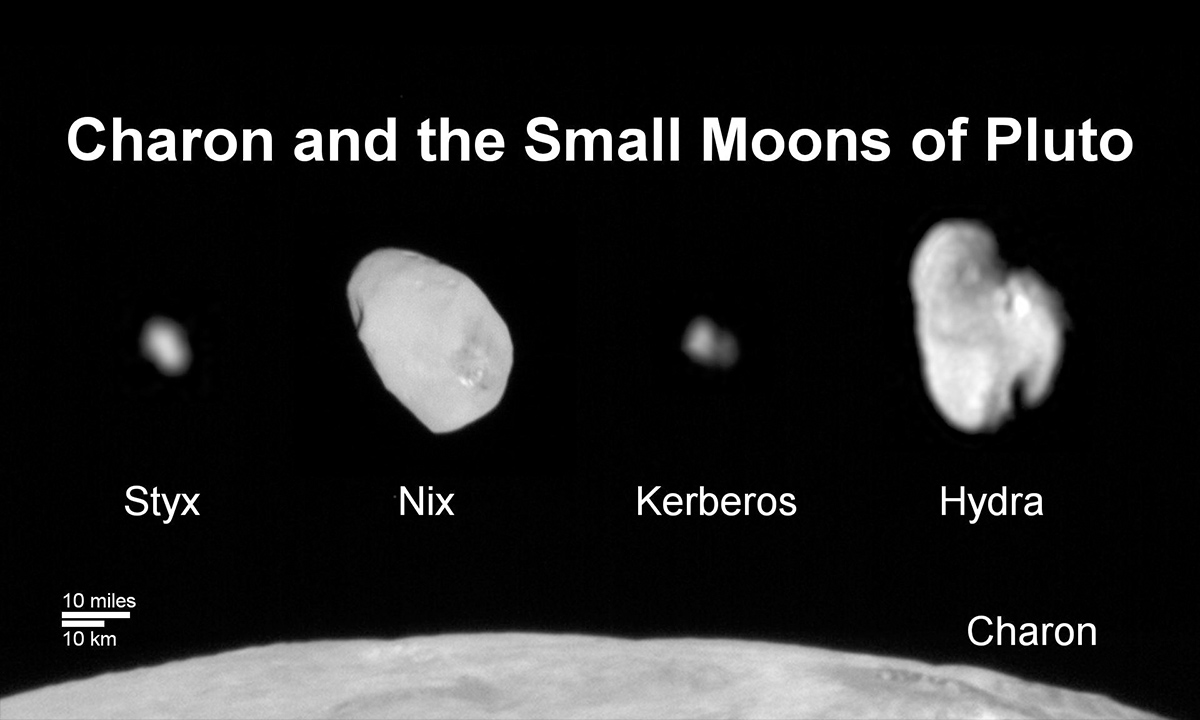
The five moons of Pluto. Credits: NASA
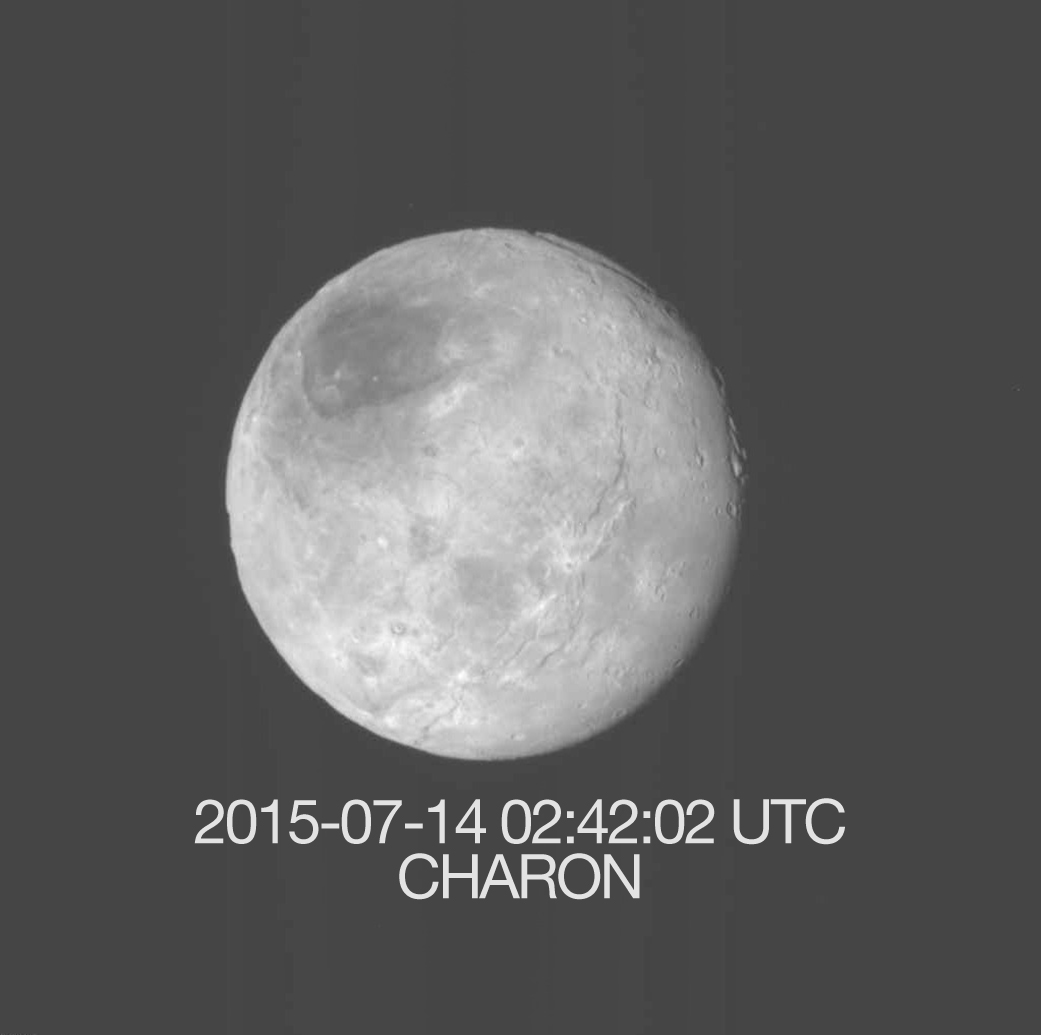
Largest moon of Pluto, Charon. Credits: NASA
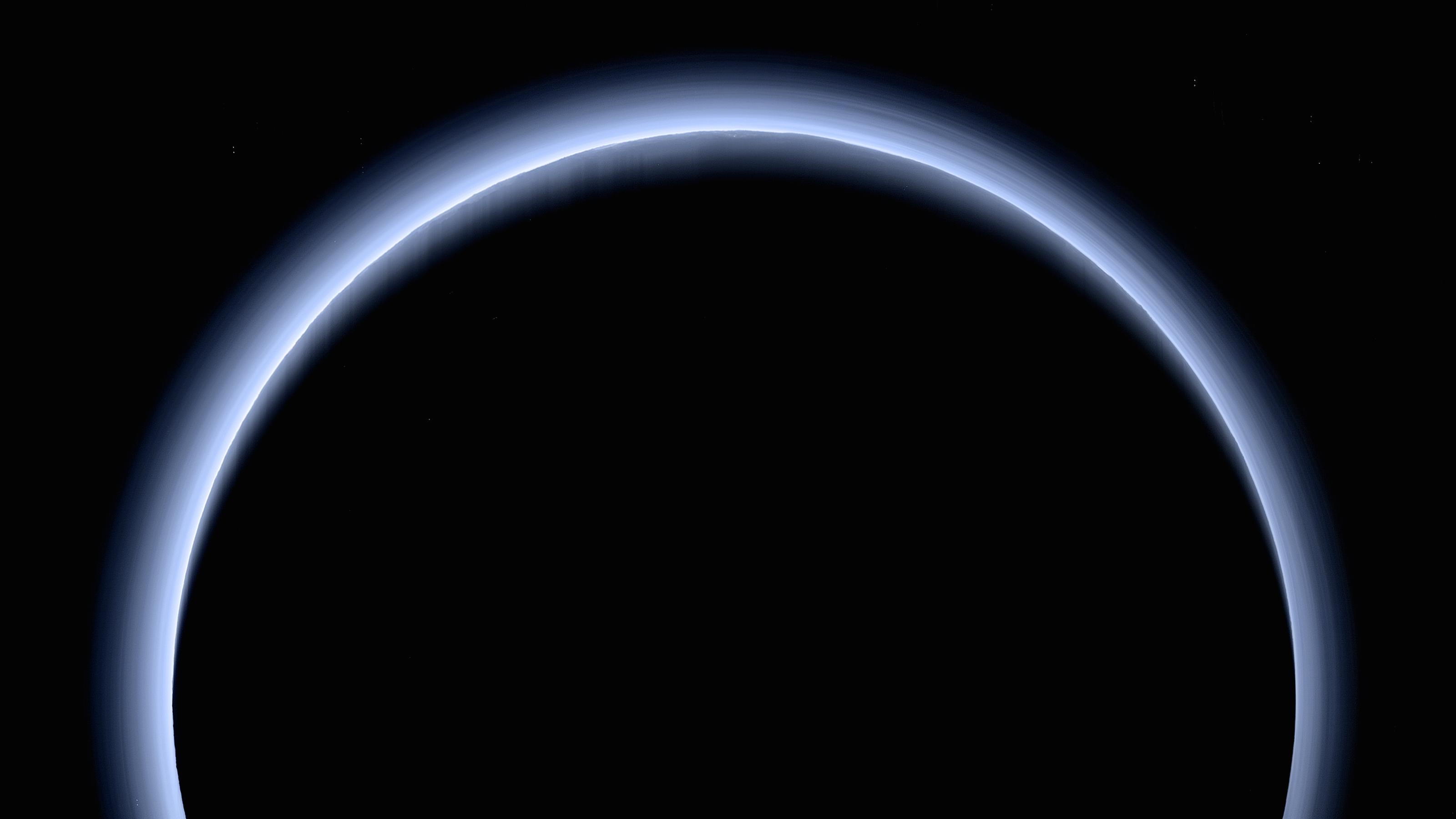
Pluto as New Horizons sped past the planet